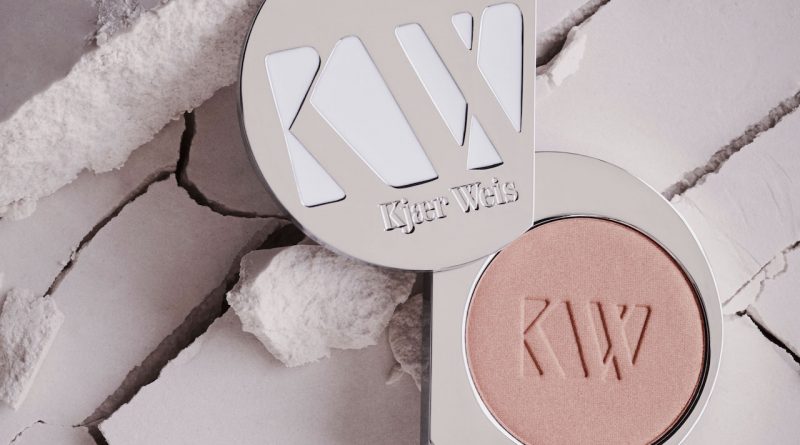Do refillable beauty products make sense? – Glossy
For the last two years, the concept of refillable products has circled the beauty industry.
But in 2020, the industry has started to accelerate the adoption of refillable products as a kind of reinvention of the traditional milkman or dabbawalas (which are popular in India) concept in which products can be purchased without a need to be thrown away after containers are emptied. Across beauty, customers can refill products in a number of ways, including via subscription, in-store refills or a circular program like Terracycle. Hair care company Eufora implemented plans in July to introduce refillable travel-size containers, and luxury lipstick brand La Bouge Rouge expanded its portfolio of products to include refillable mascara and eyeliner in August.
However, unlike milk or a dabbawala lunch, refillable beauty faces a larger customer acquisition issue, given that refillable products tend to cost more at the onset and then offer less expensive refills. Still, the acceleration of refillable beauty product releases does not seem to be slowing down, even during the pandemic, which hints at how far it can go in making a positive environmental impact.
Clean skin-care brand REN, which was founded in 2000 and acquired by Unilever in 2015, has featured sustainability as a core value since its inception. Amid several sustainability efforts, such as using ocean-bound plastic and setting plans to produce zero waste by 2021, REN began working with Terracycle in 2018 to create a refillable system for REN’s six bestselling products. They include body wash and body lotion. A product is shipped to a customer in a special tote to avoid use of cardboard, and when the product is used, the customer can scan a barcode at the bottom of the product in order to schedule a pick-up from Terracycle. From there, the bottle is refilled and sent back out to the customer, and is 15% less expensive than the original purchase. Currently, 8% of REN’s product portfolio is refillable, and by the end of 2021, at least 10% will be.
“Packaging is not luxury; packaging is waste,” said Arnaud Meysselle, REN’s CEO.
Meysselle said that the Terracycle partnership was a more sustainable refill option than offering large plastic sachets that customers could order online and use to refill the original bottles, because even though the sachets require less plastic than the original bottles, they are not made from recyclable material. Brands like hair-care brand NatureLab Tokyo and L’Occitane have adopted the sachet refill approach, and L’Occitane has also incorporated refillable stations inside approximately 50 global stores which temporarily closed during the pandemic.
“The problem with pouches is that they are not recyclable,” said Meyselle. “To be recyclable. they need to be made from one plastic material, and most pouches are not, so it’s going to a landfill. We decided to skip that step and go to the next step, which [in 2021] will be refillable solutions made from recycled plastic.”
According to NPR, the average American generates more than 250 pounds of plastic waste every year, with much of it coming from packaging. And on average, the beauty industry itself produces over 120 billion packaging units per year, with most of it ending up in a landfill, according to the U.K. environmentalist group Zero Waste Week. In the history of plastics production, only 9% of all plastic waste has been recycled, according to the United Nations, while another 12% has been incinerated and 79% has accumulated in landfills, dumps or the natural environment.
“The order of reduce, reuse, recycle is perfect as it is. Unfortunately, there has been a concerted effort over many decades from many players in the consumer goods industry to sell us that story that we can recycle our way out of the problem,” said David Pinsky, senior plastics campaigner for environmental non-profit Greenpeace USA.
There are many reasons why plastics are not and cannot be recycled. In beauty, it often comes down to mixed-use plastics, which are hard to extract from one another at a recycling plant. For example, in the case of a simple deodorant package, there are several different types of plastic including the adhesive labels, the protective cap and the twistable gear at the bottom that often means that the whole product ends up in trash. That’s why refillable deodorant brands, like Myro, have entered the picture.
“People want sustainable options, but they also want sustainable options that are easy to use and fit into a routine that they’re already used to,” said Greg Laptevsky, Myro deodorant founder and CEO. “We need to fit on this fine line of creating something [not too] wildly different, because it may not get the adoption that you need to make an impact.”
For example, although Myro is refillable, the outer packaging is still plastic. Laptevsky said the design of the product is based on what people are familiar with. Refills reduce plastic waste by 50%, he said, and make up more than 50% of Myro sales, but he declined to elaborate. Myro offers a refill subscription service and à la carte purchases, but Laptevsky declined to state what percentage of sales are via the subscription and what’s typical in terms of the company’s retention rates. Subscription refills cost $10 per pod, but free shipping is included; pods are sent in packs of three in order to cut down on shipping packaging and carbon emissions. À la carte pods can be purchased in one, two or three packs, and are $15 per pod plus $5 for shipping.
“The opportunity is for Myro to expand and grow our brand promise by following the same model of going after specific categories that have universal usage,” he said. “[That could be] bath products, body care products or skin-care products.”
Creating attractive packaging is important for refillable products, so that they can compete with existing brands. Kirsten Kjaer Weiss, founder and CEO of her eponymous clean beauty company, said that when developing her premium brand, she decided on a luxurious outer packaging made from a metal alloy. Since it is not recyclable, she opted to make the products’ containers refillable. Kjaer Weiss’s core customers are 30- to 35-years-old, and the metal alloy products range from $45-$68. Refills are $19-$45.
“Something sustainable that maintains its luxury appeal was key from day one,” said Kjaer Weiss.
Still, the premium pricing of products can be a deterrent for new customer acquisition, given the expectation is that a customer will be locked into a product. Kjaer Weiss launched a red-colored paper packaging system in May, which is both recyclable and compostable, and helps to solve the new customer issue. On average, the products with the red, compostable packaging cost 25% less than products using the brand’s original alloy packaging, and refills are 40-50% less expensive. Refills make up 30% of the brand’s overall sales, said Kjaer Weiss, and the brand saw a 63% increase in refills between the first and second quarters of 2020.
“The red edition offers people the ability to buy into Kjaer Weiss at a lower price point and see if it’s something that they would want to continue to buy. It offers more flexibility and the ability to customize your choices,” she said.
Composting is another packaging option that brands have implemented — they include L’Oréal-owned Seed Phytonutrients and also Innisfree, which uses a paper bottle for a new serum that launched in August. However, just like recycling and refillable products, composting can have its own deleterious effects on the environment, including requiring more natural resources to produce compostable packaging and straining developing nations that often bear the brunt of industrial composting and recycling.
Pinsky believes that refillable consumer products are a viable option for reducing plastic waste, but raised concerns about the rate of adoption.
“What we really need to see is an investment from these large brands. It can’t just be them saying, ‘We’re going to reduce our plastic footprint by 15%.’ They actually [need to] say they are moving away from single-use material, and toward a reuse and refill [system],” said Pinsky.





